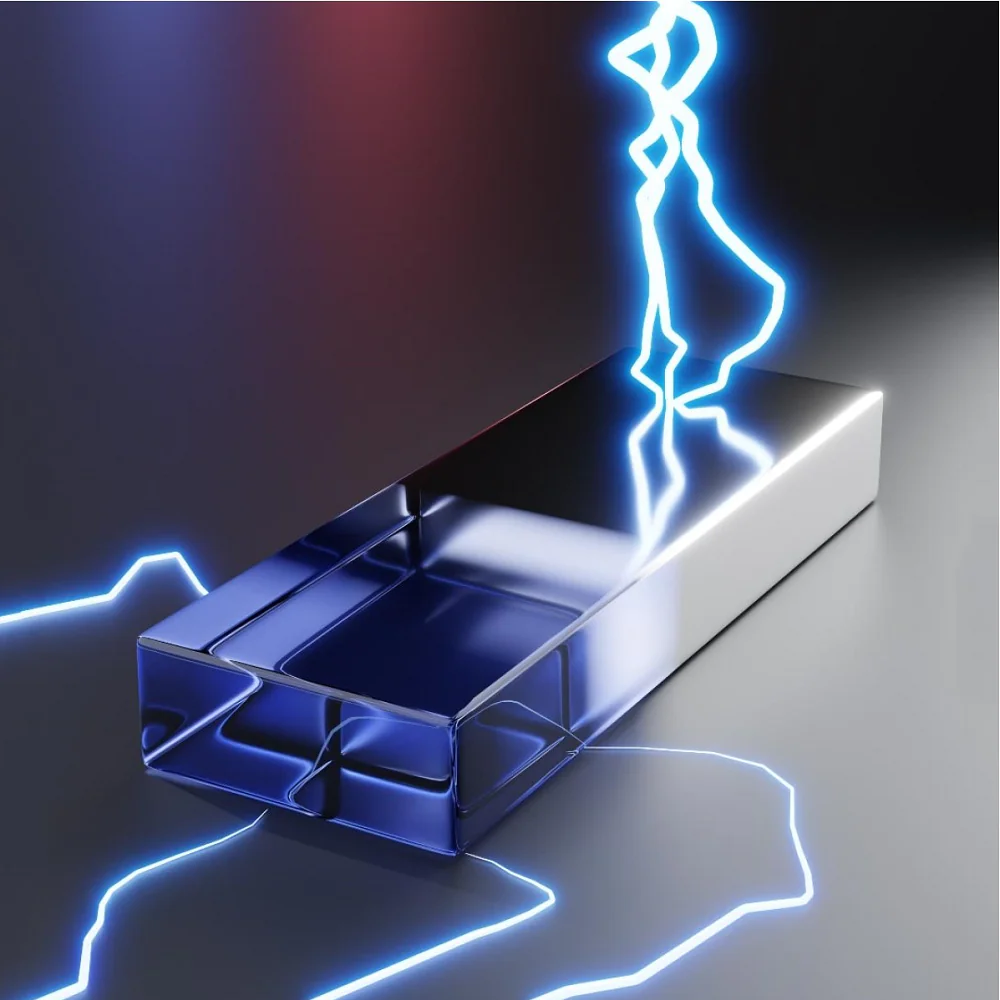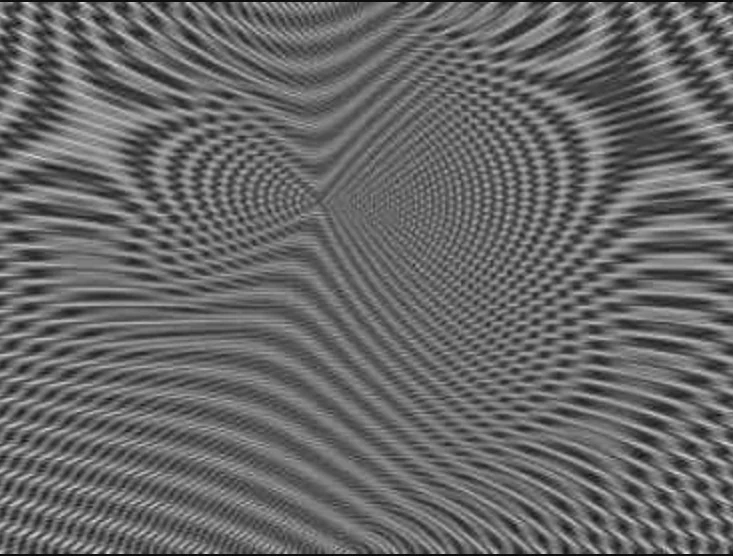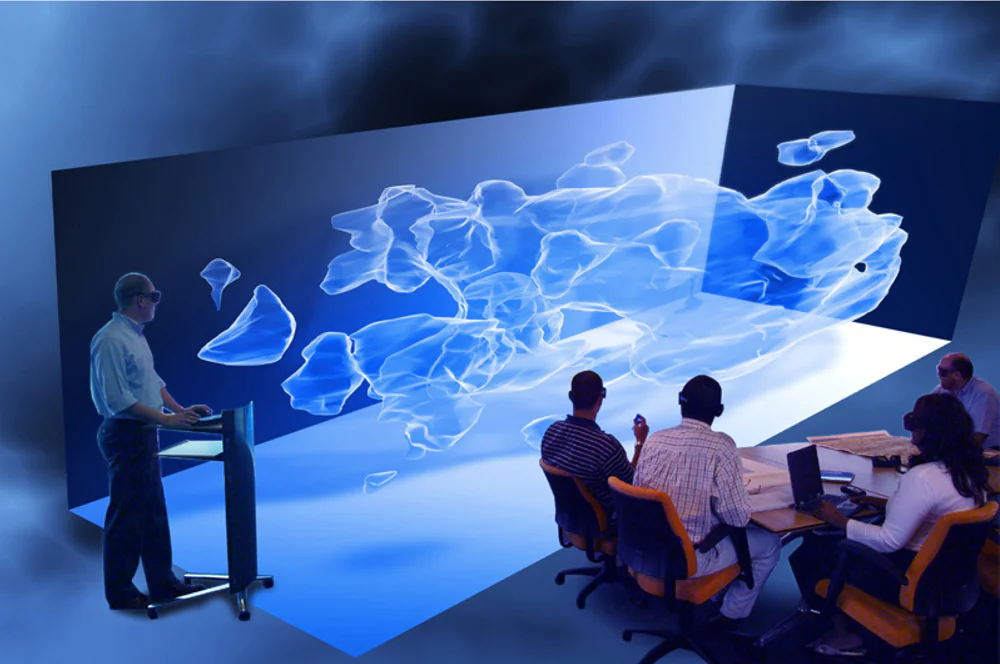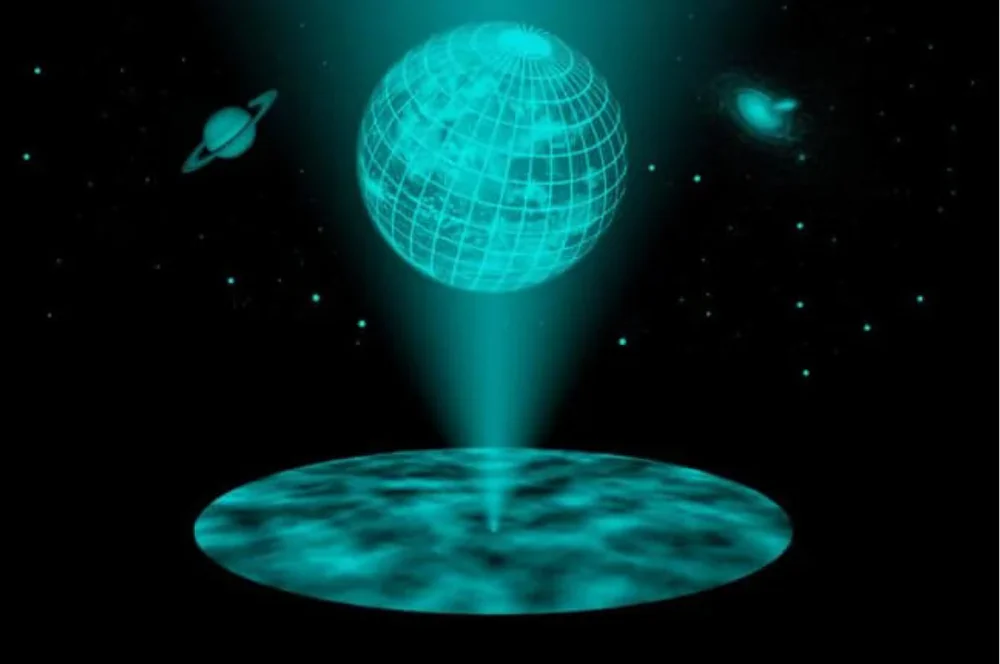© ROOT-NATION.com - Use of content is permitted with a backlink.
More than 100 years have passed since the theoretical foundations of holography were first formulated, and we still associate holograms mainly with security stickers on some new records or Tupac Shakur’s posthumous concert. However, in recent years, the topic of holography has begun to develop actively. Today we will tell you all about mysterious holographic images.
In 1920, the Polish scientist Mieczysław Wolfke in the dissertation “About a possibility of optical imaging of molecular gatings” (Über die Möglichkeit der optische Abbildung von Molekulargittern) put forward and experimentally confirmed the idea of a holographic method of obtaining images. At that time, however, no technology would allow the Pole’s discovery to be used in practice. We had to wait for this until the 60s of the last century.

Holograms became widely known in 1977 thanks to Star Wars, in which they acted as carriers of information and means of communication. In this way, a very complex scientific theory entered pop culture, capturing the imagination of millions of people around the world. Are we close today to how George Lukas imagined holography?
Recommended reading: James Webb Telescope photographed the oldest galaxy
What is holography?
“Help me, Obi-Wan Kenobi. You’re my only hope.” This text, known to all Star Wars fans, spoken by a three-dimensional projection of Princess Leia, became for many viewers the first idea of what holography and holographic imaging are.
Today, when we hold in our hands a disc with the record of our favorite band, we see a colorful sticker on it, shimmering with different colors of the rainbow. This is a holographic confirmation of the authenticity and legality of the disc. So, this is also a hologram, but how is it created and what is it used for?
I will try to answer these questions as accessible as possible. However, this will obviously not be an easy and simple task, mainly because of the need to define and explain some physical concepts, although most of them should be familiar to you from your physics classes. This is necessary because the final effect is the result of the practical use of achievements from various fields of technology. Therefore, a misunderstanding of the theoretical foundations can lead to a misunderstanding of the whole problem.
However, I do not intend to burden this article with theories supported by Maxwell’s equations. I could, but for what? It would not add anything new and would certainly make it more difficult to understand. I will try to explain in an accessible way the principles of recording and reproduction of holographic images, using clear drawings and definitions of basic physical concepts in the field of optics and wave motion. And I will also talk about the practical application of holography, including the holographic recording of information in computer technologies.

Let’s start with a definition that will make things a little easier for us. Holography, like photography, which has been known to mankind since the 19th century, is a way of obtaining images. Both of these terms come from the Greek language, however, if the word photography comes from the words “photo” and “graphe”, which mean “light” and “picture”, then the first part of the word holography comes from “holos”, which in Greek means ” whole”.
So, holography is “drawing the whole”. What does it mean? In a standard photograph, we can only preserve a two-dimensional image of what we see in a three-dimensional world. The idea behind holography is to record information about the entire object, not just one side of it. So that it is possible, using the recorded information, to reproduce the image of the entire object.

But how to preserve the appearance of a three-dimensional object? For this, the phenomenon of light interference is used. Visible light, which is part of the electromagnetic spectrum, itself consists of two components – an electric field and a magnetic field. But most importantly, light is a wave, not just a stream of photons, so superimposing multiple waves can create new waves with new characteristics. Then, using the phenomenon of diffraction, the image of superimposed waves can be reproduced so that it reflects the recorded characteristics.
Recommended reading:
Hologram recording and display
Thanks to the wave nature of light, it is possible to record the appearance of an object in three dimensions on standard photographic film. With the help of a suitable laser, one beam of which is aimed at a translucent plate and is directed both at the object to be imaged and directly at the film, a pattern of overlapping waves is created. Such an image is a superposition of a large number of interferences of individual spectral components of light, and if we wanted to get a “photograph” from such a film, our eyes would not see an object illuminated by a laser, but a melange of interference lines, which by themselves do not tell us anything about the photographed object.
Here’s how it looks in practice:

Only the correct exposure of the film, which at that time is a diffraction grating, with the help of a focused laser beam allows you to reverse the entire process and obtain a three-dimensional image of the object.
Об’ємне голографічне зображення, хоча і подібне, але відрізняється від стереоскопічної техніки, яка передбачає фотографування об’єкта з двох великих планів, а потім розміщення пластинок у приладі, який називається стереоскопом. Наприклад, популярні VR-окуляри працюють таким чином, створюючи два трохи зміщених зображення. У голограм цей зсув фіксується на одному середовищі у вигляді хвильової інтерференції.
Recommended reading:
- 100 years of quantum physics: From 1920 theories to computers
- NASA’s spacecraft discovered the “fluffy” surface of Bennu asteroid
Hologram and “hologram”
The problem with the technology described above is that it requires precise laser light and near laboratory conditions to achieve satisfactory results. And although the original idea of holograms found practical application, for example, in recording data on HVD standard media with a theoretical capacity of several TB, however, they did not become a popular media for home use.

Practical solutions show that the complex process of obtaining a holographic image simply loses to other technologies that achieve the same effect, but use other techniques. And although from a scientific point of view such images should not be called holograms, it is customary to call all these pseudo-holograms simply “holograms”.

In practice, however, neither the Tupac concert image nor the image of Queen Elizabeth II in her 260-year-old carriage is true holograms from a scientific point of view.

A hologram is not what we see in HoloLens glasses or on the windshield of a car with a “holographic display”. Most often, this is a three-dimensional image created with the help of several separate (and not one, as in the case of the original hologram) light rays falling from different sides on a medium, which can be transparent glass, a water curtain, or “floating” water vapor over such a “holographic display”.

I have no great objection to the use of the term “hologram” in these techniques, and the main reason is that the effect obtained in this way very often corresponds to the main properties of holography, namely the storage and reproduction of more information about the object – in this case, it is about viewing the object from different angles.
Also interesting:
“Holograms” of today
Systems based on projectors, which display images on various transparent materials, work a little differently. Light directed from different angles contains information about the image seen from the other side. The rays will meet on the surface of the glass, water, or, as in the case of the forgotten Polish invention Leia Display, a vapor curtain, creating the impression of a three-dimensional image appearing in mid-air (the ultimate advantage of a true hologram).

Another example is the 3D screens from Looking Glass. Those projecting an image not on a two-dimensional surface, but create it inside a three-dimensional body, for example, glass. The company, in particular, has been working on the Looking Glass Factory solution for years, and we were able to admire the first serious results of this work in 2020.

We can also mention the German Roncalli circus, which refused to perform acts with animals, although in Germany, by the way, unlike in many European countries, circuses with animals are not prohibited. Now elephants, horses, and fish appear in the arena in the form of holograms.

The system, which allows viewers to see holograms, costs more than half a million euros.
Also interesting:
- “Black hole police” discovered a new black hole themselves
- Solar energy is more suitable for Martian colonies than nuclear
Do people realize that they live inside a hologram
Of course, it was not without people who support the ideas of a global conspiracy. They believe that you and I have been living in one big hologram for a long time, that the world around us is a hologram, a Matrix. I will try to explain everything now.
When “The Matrix” movie appeared, everyone was very surprised by the idea of the script, which arose from the Wachowskis. However, the idea underlying the story of the Matrix is also present in Eastern philosophies. Some quantum physicists have long recognized that what science describes in the language of mathematics has been known for centuries in the form of religious messages. That is, if we believe this theory, then we live in a large hologram.
They claim that humanity has become so preoccupied that it is unable to notice some things. We observe the world and participate in its creation, very often without realizing the possibility of influencing what happens to us. Physicists are searching for evidence of the existence of a Higgs field full of characteristic bosons called the god particle, but we consider information about such searches in isolation from the implications that the discovery of such a mechanism would have.

It may turn out that confirming the existence of Higgs bosons will force us to ask ourselves important questions about the nature of the world and how it was created. Suddenly, it may turn out that the concepts of the Matrix are not so fantastic, and we all actually live in a large hologram, and we are holograms ourselves.
Such conclusions can be drawn from the information obtained thanks to the development of quantum physics. We know for sure that the basic rule that determines what will happen is probability. We also know that some physical experiments are simply impossible because the very fact of observing their effects determines what happens in them. Einstein, realizing the consequences of such thinking, said that the world cannot depend on God playing dice.
What if we’re actually living in a big hologram, and our interactions with it, the expressions of our expectations and fears, interact with it, causing us to experience different things? There are some methods of influencing what happens to us, which are called positive. Anyone who’s tried them knows it works, and mostly because we know it’s supposed to work. The same with various alternative treatments. They are based on our ability to control the hologram by eliminating negative thoughts, that is, through faith.
Science is looking for an answer to the question of why there is mass if matter consists of actually empty particles. However, for us humans, it still seems that the world around us is very real, and we do not even suspect that if we understood our capabilities, everyone could be like Neo from the said “Matrix”, or Buddha who could move mountains with the power of his thought.
In simple words, we are already in the Matrix and we are all holograms on which nothing depends. I just want to smile at such ideas about our world.
Also interesting: Mastercard to use quantum technologies
Will everyone have their own hologram?
But let’s get back to reality. The future is definitely in 3D rendering. However, there will likely be a long way to go before real holograms appear on the streets, like in “Blade Runner”. Until then, we will have many “simulation holograms” and demonstrations of technologies that will increasingly mislead our senses and create the impression that we are looking at real three-dimensional objects.
So Google set exactly such a goal for its developers. It is known that they are working on the interesting Project Starline, that is, a “holographic” booth for conversations. They have already shown some results of their work.

Google employees, using a series of cameras and sensors, created accurate 3D models of people talking to each other, giving the impression that they are in the same place. Currently, this solution has been tested in the company’s offices.
Some scientists believe that we are already one step away from the appearance of hologram technology in the means of everyday communication between people. This will require the construction of other infrastructure for next-generation communications – a fiber-optic network connecting the continents and a 6G wireless communications infrastructure. Many tech companies are already engaged in such activities. Maybe in a few years, holograms will become a part of everyday life, but I hope that they will not replace real communication between people.

Some scientists also point out that holograms can already be used since the appropriate technologies exist, but at this stage, it is so expensive that it is not entirely profitable. The situation is very similar to how the Internet developed. At the initial level, almost no one believed in it, and now it is impossible to imagine the present without its existence.
So there are many signs that in a few years we will be able to have our own holograms to visit our friends from the comfort of our homes. However, it should be borne in mind that the predictions of scientists regarding the necessary technologies do not always come true.
You can also help Ukraine fight with Russian occupants via Savelife or via an official page of the National Bank of Ukraine.
Read also:
- This is the first full-color photo of the universe, shot on Webb
- All You Need To Know About Ted Lasso Season 3

